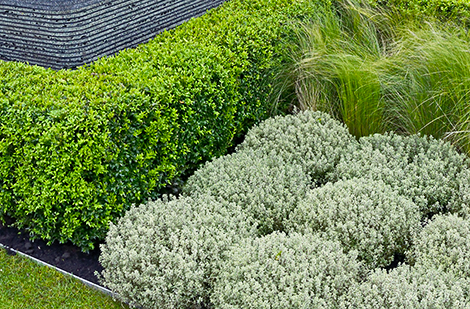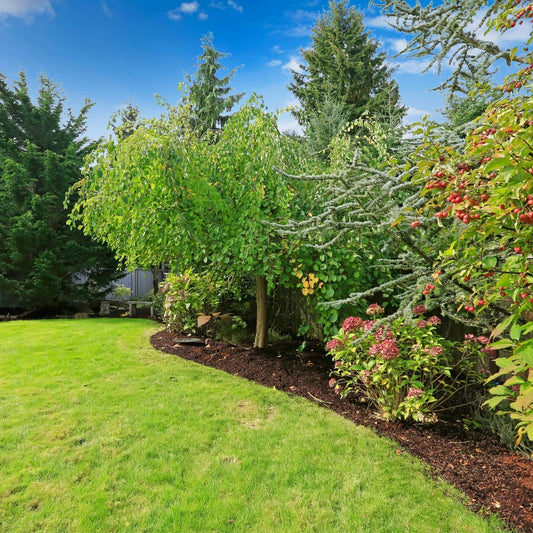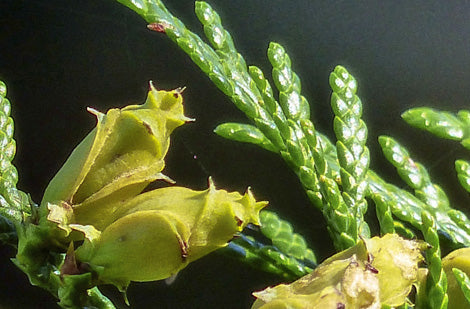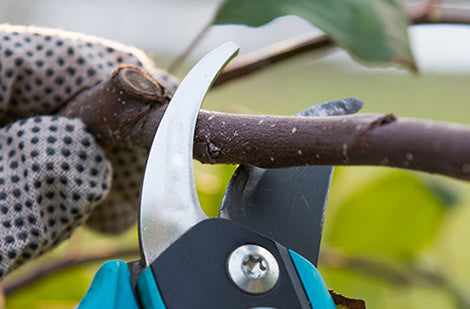Thuja occidentalis 'Smaragd'
Smaragd' Emerald American arborvitae
Smaragd' Emerald American arborvitae
Exposure
- Sun
- Partial shade
Rusticity
- Evergreen
- Dense foliage
- Cold Hardy
- Shelter for birds
- Dense foliage
The 'Smaragd' thuja (Thuja occidentalis 'Smaragd'), also known as the emerald thuja, is a remarkably beautiful evergreen conifer that will add a touch of elegance and greenery to your garden all year round. This compact columnar conifer reaches a mature height of 4 to 6 meters and offers dense, vibrant emerald green foliage that is sure to turn heads.
Remarkable Features:
- Emerald Green Foliage: The 'Smaragd' is distinguished by its intense emerald green foliage that retains its vibrant color throughout the year, even in winter.
- Compact Columnar Form: This conifer features a narrow, compact columnar form, ideal for planting in hedges, borders, or as a vertical accent in your garden.
- Moderate Growth: The 'Smaragd' grows at a moderate rate, adding about 15 to 20 cm in height per year.
- Remarkable Adaptability: This conifer adapts to a variety of soils and light conditions, even tolerating occasional drought.
- Increased Hardiness: The 'Smaragd' is hardy to zone 3, which means it can withstand winter temperatures down to -34°C.
Growing Information for Optimal Growth:
- Soil: The 'Smaragd' thuja prefers rich, well-drained, and slightly acidic soil. It also tolerates neutral and slightly sandy soils.
- Light: This conifer thrives in full sun or partial shade.
- Watering: Regular watering is important, especially during dry periods. Allow the soil to dry slightly between waterings.
- Pruning: Light pruning is recommended each year to maintain the 'Smaragd's' columnar form and promote healthy growth. Remove dead, diseased, or damaged branches, and prune the main branches to retain the tree's compact shape.
Plant details
Dimensions
Dimensions
Characteristics
Characteristics
Habit:
- Pyramidal
Flowering colours:
Plant needs
Plant needs
Watering:
- Prefers well-drained soil. Water regularly during dry periods to keep the soil slightly moist
- especially during hot periods. However
- it is essential not to let the soil become constantly soggy
- as excess moisture can lead to root problems.
Maintenance:
- Easy. Pruning should be done in the new growth in late June
- if necessary.
Soil requirement:
- Well-drained soil
- Fresh
- Deep
- Moist in times of drought
Features
Features
Resistance:
- Winter winds
Attract:
- Birds
Use:
- Clump
- Hedge
- Landscaping
- Isolated
- Flowerbeds
Attribute:
- Evergreen foliage





Related articles
-

Hedge – other shrubs available
Read the articleCréez une haie mixte, composée de différentes espèces d’arbustes comme le buis, le saule et la spirée japonaise. Donnez du style à la cours arrière.
-

Fall Pruning: Key Steps for Your Trees, Shrubs,...
Read the articleFall is here, but do you know what to prune in your garden? Discover our guide to pruning trees, shrubs, and roses and make sure you take the right steps.
-

Trees and shrubs for small space landscaping
Read the articleHaving an exceptional garden is possible, even in the city! Discover our selection of trees and shrubs perfect for small lots, and transform your outdoor space into a green oasis.
-

Ensure a healthy cedar hedge
Read the articleEntretenir sa haie de cèdres - arrosage, fertilisation, protection hivernale et taille. Peu exigeants, les thuyas résistent bien aux maladies et insectes
-

Pruning cuts for trees and shrubs
Read the articleWe all dream of a tree with well-distributed branches or a shrub full from its base to its top. To achieve this, they must be pruned. There are different types...
-

Cedar hedge : when and how to prune
Read the articleLes conifères n'ont pas besoin de beaucoup de taille, sauf lorsque vous les utilisez comme haies ou topiaires. Apprenez comment et quand tailler.















